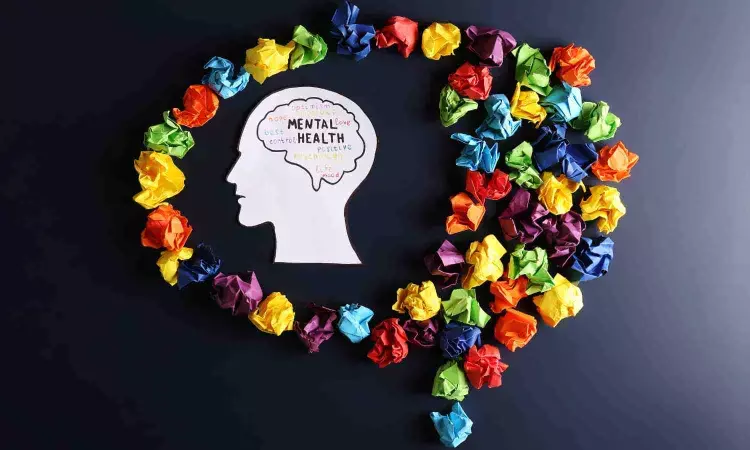- Home
- Medical news & Guidelines
- Anesthesiology
- Cardiology and CTVS
- Critical Care
- Dentistry
- Dermatology
- Diabetes and Endocrinology
- ENT
- Gastroenterology
- Medicine
- Nephrology
- Neurology
- Obstretics-Gynaecology
- Oncology
- Ophthalmology
- Orthopaedics
- Pediatrics-Neonatology
- Psychiatry
- Pulmonology
- Radiology
- Surgery
- Urology
- Laboratory Medicine
- Diet
- Nursing
- Paramedical
- Physiotherapy
- Health news
- Fact Check
- Bone Health Fact Check
- Brain Health Fact Check
- Cancer Related Fact Check
- Child Care Fact Check
- Dental and oral health fact check
- Diabetes and metabolic health fact check
- Diet and Nutrition Fact Check
- Eye and ENT Care Fact Check
- Fitness fact check
- Gut health fact check
- Heart health fact check
- Kidney health fact check
- Medical education fact check
- Men's health fact check
- Respiratory fact check
- Skin and hair care fact check
- Vaccine and Immunization fact check
- Women's health fact check
- AYUSH
- State News
- Andaman and Nicobar Islands
- Andhra Pradesh
- Arunachal Pradesh
- Assam
- Bihar
- Chandigarh
- Chattisgarh
- Dadra and Nagar Haveli
- Daman and Diu
- Delhi
- Goa
- Gujarat
- Haryana
- Himachal Pradesh
- Jammu & Kashmir
- Jharkhand
- Karnataka
- Kerala
- Ladakh
- Lakshadweep
- Madhya Pradesh
- Maharashtra
- Manipur
- Meghalaya
- Mizoram
- Nagaland
- Odisha
- Puducherry
- Punjab
- Rajasthan
- Sikkim
- Tamil Nadu
- Telangana
- Tripura
- Uttar Pradesh
- Uttrakhand
- West Bengal
- Medical Education
- Industry
Teenagers with classmates having mental illness at significantly greater risk of psychiatric diagnosis later in life: JAMA

Researchers have found that mental disorders may be transmitted within adolescent peer networks. This inference comes from a comprehensive population-based study conducted in Finland, examining the potential influence of having classmates with mental disorders on one's own mental health. The study was published in JAMA Psychiatry and was conducted by Jussi Alho and colleagues.
Previous studies have indicated the possibility of mental disorders being transmitted within social networks. However, these studies often lacked broad epidemiologic evidence that spans a wide range of mental disorders. To address this gap, researchers conducted an extensive analysis of Finnish adolescents, linking demographic, health, and educational data. The objective was to determine whether exposure to classmates diagnosed with mental disorders in the ninth grade is associated with an increased risk of developing a mental disorder later in life.
The study included data on all Finnish citizens born between January 1, 1985, and December 31, 1997. Participants were followed from approximately age 16 (the end of ninth grade) until they were diagnosed with a mental disorder, emigrated, died, or until December 31, 2019. The exposure measured was having one or more classmates diagnosed with a mental disorder in ninth grade. The main outcome was being diagnosed with a mental disorder during the follow-up period.
• The study cohort consisted of 713,809 individuals, with a median age of 16.1 years at the start of follow-up, and 50.4% were males.
• Of these, 47,433 had a mental disorder diagnosis by ninth grade. Among the remaining 666,376 individuals, 167,227 (25.1%) were diagnosed with a mental disorder during the follow-up period, which encompassed 7.3 million person-years.
• Having one diagnosed classmate did not significantly increase the risk (HR, 1.01; 95% CI, 1.00-1.02).
• Having more than one diagnosed classmate increased the risk by 5% (HR, 1.05; 95% CI, 1.04-1.06).
• The risk was highest during the first year of follow-up:
• A 9% increase for one diagnosed classmate (HR, 1.09; 95% CI, 1.04-1.14).
• An 18% increase for more than one diagnosed classmate (HR, 1.18; 95% CI, 1.13-1.24).
• The risk was particularly pronounced for mood, anxiety, and eating disorders. These associations persisted even after adjusting for parental, school-level, and area-level confounders.
The study suggests that mental disorders might be spread within adolescent peer networks. This potential transmission could be due to several factors, including shared environmental influences, social learning, and emotional contagion. The findings underscore the importance of addressing mental health within school settings and peer groups. This study highlights the potential for mental disorders to be transmitted within adolescent social networks, emphasizing the need for targeted interventions and further research into the mechanisms of such transmission.
Reference:
Alho, J., Gutvilig, M., Niemi, R., Komulainen, K., Böckerman, P., Webb, R. T., Elovainio, M., & Hakulinen, C. (2024). Transmission of mental disorders in adolescent peer networks. JAMA Psychiatry (Chicago, Ill.). https://doi.org/10.1001/jamapsychiatry.2024.1126
Dr Riya Dave has completed dentistry from Gujarat University in 2022. She is a dentist and accomplished medical and scientific writer known for her commitment to bridging the gap between clinical expertise and accessible healthcare information. She has been actively involved in writing blogs related to health and wellness.
Dr Kamal Kant Kohli-MBBS, DTCD- a chest specialist with more than 30 years of practice and a flair for writing clinical articles, Dr Kamal Kant Kohli joined Medical Dialogues as a Chief Editor of Medical News. Besides writing articles, as an editor, he proofreads and verifies all the medical content published on Medical Dialogues including those coming from journals, studies,medical conferences,guidelines etc. Email: drkohli@medicaldialogues.in. Contact no. 011-43720751


